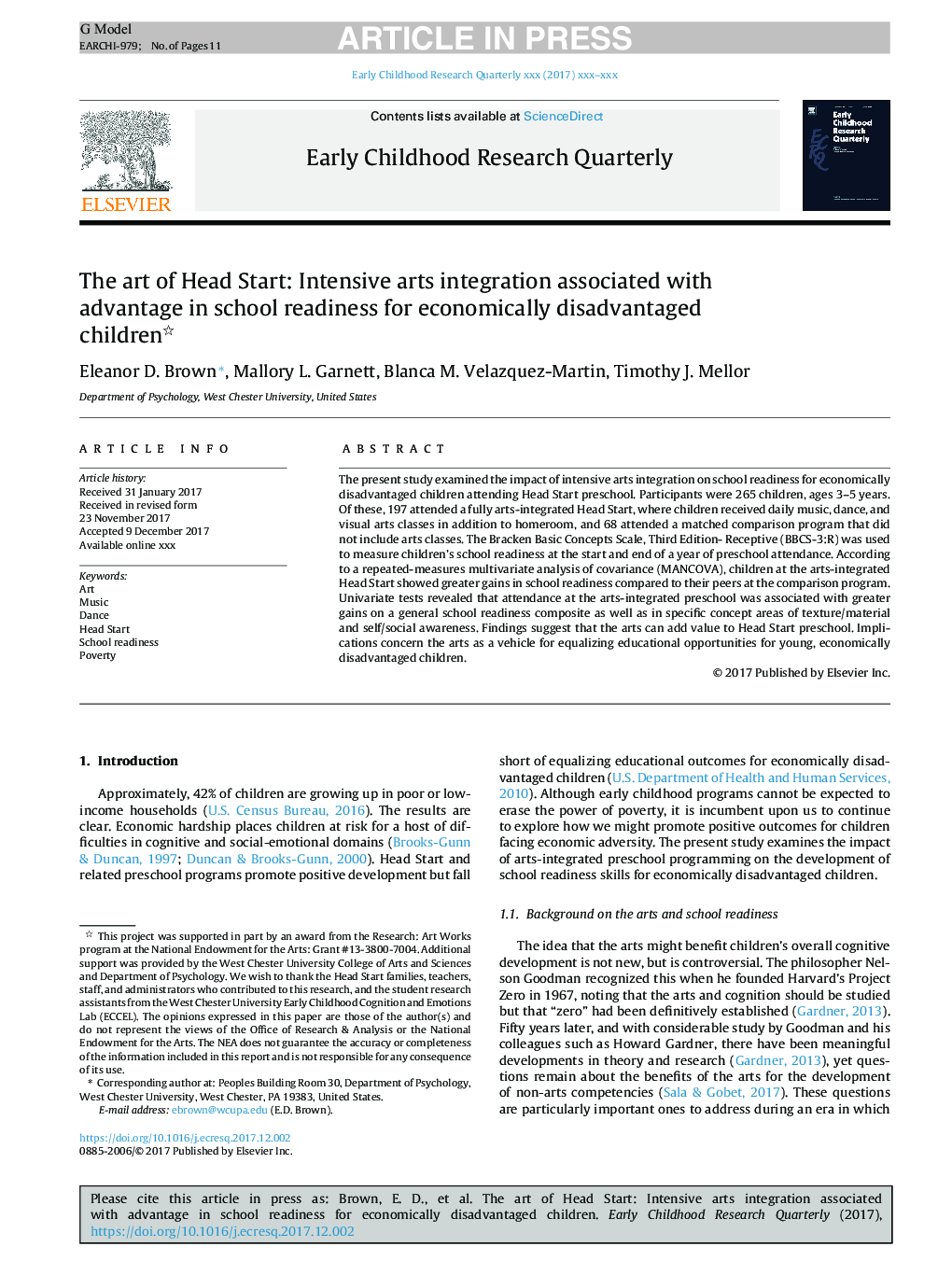| Article ID | Journal | Published Year | Pages | File Type |
|---|---|---|---|---|
| 11002139 | Early Childhood Research Quarterly | 2018 | 11 Pages |
Abstract
The present study examined the impact of intensive arts integration on school readiness for economically disadvantaged children attending Head Start preschool. Participants were 265 children, ages 3-5 years. Of these, 197 attended a fully arts-integrated Head Start, where children received daily music, dance, and visual arts classes in addition to homeroom, and 68 attended a matched comparison program that did not include arts classes. The Bracken Basic Concepts Scale, Third Edition- Receptive (BBCS-3:R) was used to measure children's school readiness at the start and end of a year of preschool attendance. According to a repeated-measures multivariate analysis of covariance (MANCOVA), children at the arts-integrated Head Start showed greater gains in school readiness compared to their peers at the comparison program. Univariate tests revealed that attendance at the arts-integrated preschool was associated with greater gains on a general school readiness composite as well as in specific concept areas of texture/material and self/social awareness. Findings suggest that the arts can add value to Head Start preschool. Implications concern the arts as a vehicle for equalizing educational opportunities for young, economically disadvantaged children.
Related Topics
Social Sciences and Humanities
Psychology
Applied Psychology
Authors
Eleanor D. Brown, Mallory L. Garnett, Blanca M. Velazquez-Martin, Timothy J. Mellor,
